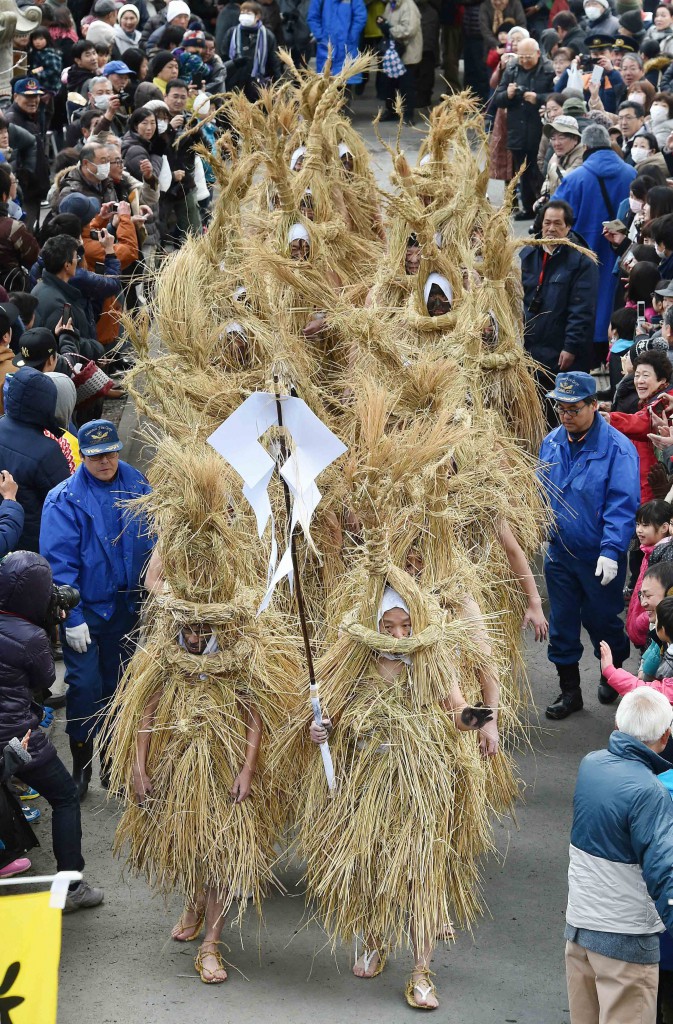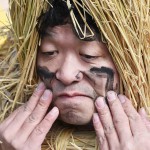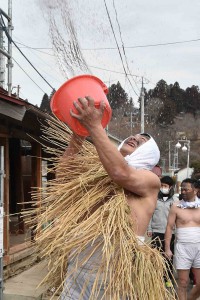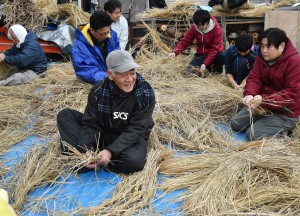Every year in early February, a group of men dressed in straw hats and coats appear in Yonekawa, Towa-cho, Tome-shi, Miyagi Prefecture. The men in the unique costumes parade through the streets to thank fire for the gift it offers to human life and pray to god for a safe year free from fire hazard. The amusing event is called “Yonekawa-no-Mizukaburi,” which literary means “a water festival of Yonekawa” in Japanese.
“Ho, ho, ho!” The thirty half-naked men in the straw costumes shouted loudly to signal the start of the festival. Then, the men acting as divine
messengers started from a temple in the village and walked down the streets, throwing water over the houses using buckets and water prepared by the residents. The villagers believes this will protect the houses from fire.
At the same time, the villagers pull straws from the costumes and put it on their roofs as a charm to ward off disasters.
This unique festival dates back to the mid-Edo period and was designated as a significant intangible folk cultural asset of Japan in 2000. The villagers have formed the Association for the Preservation of Yonekawa no Mizukaburi to help maintain the precious tradition.
Japan is now trying to group this festival and other seven traditional festivals includeing Namahage in Ojika-shi, Akita Prefecture, and Amahage in Yuza-machi, Yamagata Prefecture, as a group of unique festivals where divine messengers make visit at each house to pray for happiness and safety of the family, and put it in the tentative lists of UNESCO’s Intangible Cultural Heritage of Humanity.
(Feb. 14, 2016)





